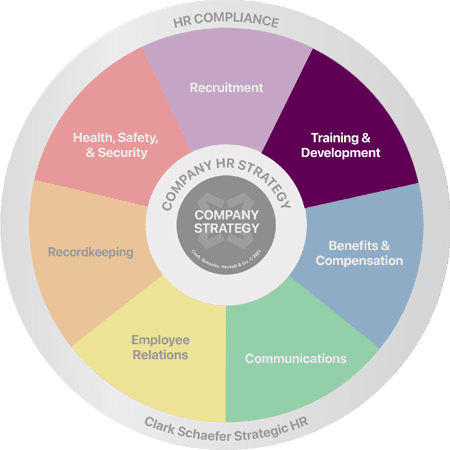Training and Development: Are They the Same?
Last Updated on June 12, 2020 / Training & Development
Many of you are deep in the throes of your performance management process: reflecting back on 2015 and the performance of your employees and also looking ahead to how you can appropriately prepare your employees to tackle what needs to be accomplished in 2016. It never fails that the performance management document seems to have the all-encompassing “Development Needs” section, and we are always struggling to pick the most relevant training from the list of offerings to address our employees’ development needs and move to the next section on the form. But are we doing our employees a disservice by only focusing on training to address their performance and developmental needs? Are training and development REALLY the same thing?
Good questions. Remember back to your high school Geometry class when you learned that a square is a rectangle, but a rectangle is not a square? The same is true of training and development. Training is the square: depending on the needs you’ve identified for your employees, training can be an excellent source to prepare your employees to succeed in their current jobs or even potentially prepare them for a more responsible role in your company. Employee development, however, is a rectangle: development may include training (the square), but there are a variety of other ways you can address the needs of your employees that don’t require them to attend a training session.
What’s the difference?
Most of us have benefitted from a training session or two that gave us some knowledge that we didn’t have so that we could perform our job responsibilities a little better. Training is typically focused on making sure we have the information needed to perform our current jobs and our participation is generally required. Some that may come to mind are compliance training or training on a new system your company is implementing. The best trainings help us learn rather than merely expose us to a new topic or new content.
Development, on the other hand, goes much deeper than an hour or two of listening to content on one topic. Development is much more involved, usually longer-term and can include things like strengths assessments, job experiences, mentors or coaches, personality assessments, training, 360 degree feedback and many other approaches. Developmental activities are used to prepare employees for the next step in their career and are typically voluntary.
Be the rectangle
Think back to the single most defining point of your career. Did it involve a specific role you were performing or a job experience you gained? A training course you attended? Someone taking you under their wing and supporting your career growth and acting as a mentor? Now, think about each of your employees. Do you want them to look back at the single most defining point of their careers and remember you, the opportunities that you provided for them and the counsel you gave to them? How can you become their rectangle?
So, as you’re thoughtfully plowing through your Performance Management documents and identifying some options for developing your employees, make sure to look at their individual needs closely and spend some time thinking through the best method of development for them. Simply choosing from a list of available training sessions may or may not be the best way to help them grow and to help your organization reach its goals for 2016.
If you have any questions or would like to share your comments or success stories, you can contact us info@strategicHRinc.com.




